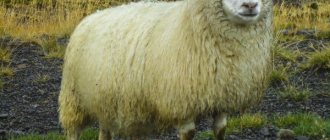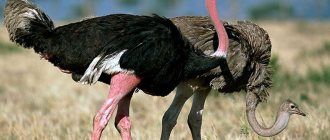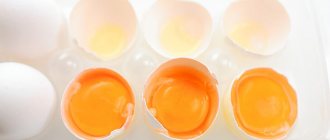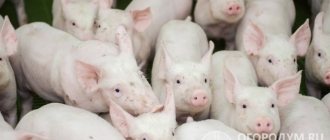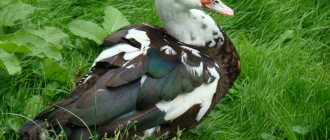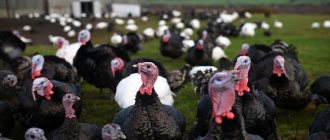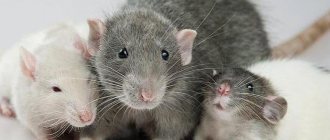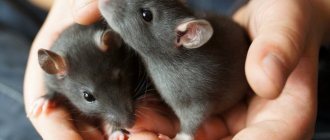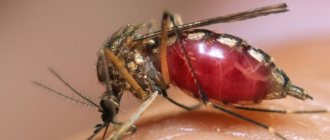How much does a turkey weigh?
The weight of an adult depends significantly on the breed of turkey. Conventionally, all breeds can be divided into 3 categories: heavy, medium and light. Females belonging to small breeds, for example, Verginskaya, Black Tikhoretskaya, reach 4 kg, males weigh up to 6.5–7 kg. At the same time, males of large breeds gain from 26 to 35 kg, females weigh 10–15 kg. It is quite obvious that it is more profitable to raise males for meat; they weigh twice as much as females. It is turkeys of large breeds that are most often raised in poultry farms.
Important! Turkeys of large breeds are bred only artificially. There are 2 reasons for this. Mating of such heavy, large birds can injure the female. With natural brooding, it is impossible to control the sex of the chicks. When hatching young animals in an incubator, you can set the necessary temperature parameters so that chicks of one sex or another are hatched.
During the first week of hatching, turkey chicks grow slowly. Active growth of the bird begins at 2 weeks and lasts until approximately 30 weeks (in some breeds, active growth ends earlier). During this time, the young increase their body weight by 200 times in females and 800 times in males.
Among the heavy breeds we can note: White Broad-chested, BIG-6, BIG-9, Canadian Broad-chested.
Turkey weight by month (table)
| Age | Female weight (g) | Male weight (g) |
| 3 days | 50 | 56 |
| A week | 140 | 160 |
| 2 weeks | 340 | 390 |
| 1 month | 1100 | 1400 |
| 2 months | 3700 | 4800 |
| 3 months | 7300 | 9800 |
| 4 months | 9000 | 14300 |
| 5 months | 11000 | 16900 |
| 6 months | 11800 | 17800 |
Attention! The most intensive growth was recorded in turkey poults at 2–3 weeks of age, then the intensity decreases. Upon entering puberty, weight gain stops or is reduced to almost zero. Most turkey breeds reach their maximum capacity by 6 months and are suitable for slaughter. There are breeds whose individuals reach their maximum weight before 6 months.
What affects the body weight of birds
Free-range turkeys, which have the opportunity to “work up an appetite” in the open air and feast on insects, grow very intensively. But the following factors also influence weight gain:
- Sex of the bird. Males gain weight faster and by the time of slaughter they have a significantly larger mass; on average, the weight of a turkey differs from the weight of a turkey by 5 kilograms. That is why, for breeding turkeys in order to make a profit from selling meat, it is preferable to raise males.
- Belonging to the breed. Each breed has its own genetic characteristics, including maximum weight. Even if you feed small breed turkey poults very intensively, they will never gain more weight than is inherent in their genetics, but such individuals can become obese and this will have a very negative impact on the health of the bird and the final result in rearing.
- Diet. It is important that the diet of turkeys is balanced and contains all the nutrients the bird needs, including vitamins and microelements. Turkeys should have a daily diet of pea gravel to help their digestive system digest grains.
- Health of turkeys. Only a healthy bird has a good appetite and successfully gains weight. Sick young animals cannot produce turkeys with good body weight. An important point in the health of turkeys is vaccinations. Vaccinated turkey poults feel better, have a good appetite and grow faster.
- Age of the bird. From hatching to reaching sexual maturity, there are periods of more and less intense growth.
To determine how well the weight gain is progressing, the chicks are weighed daily. With a large population, 5 chicks are selected from the herd, weighed, the result of each is added and divided by 5. This gives the average weight of the chicks. It is compared with the average for the previous day.
When raising a turkey for slaughter, the farmer focuses on its weight. In order for a bird to quickly reach the required size, it must be fed properly, but there are other factors on which weight depends.
Secrets of success
To make keeping turkeys a truly profitable business, it is important to follow basic recommendations for the care and nutrition of birds.
- Food should be varied and nutritious.
- Regular walking in sufficient territory.
- The presence of fresh grass enriched with vitamins in the diet.
- The food should contain shells or limestone as a source of minerals.
To obtain turkeys weighing 12 kg by mid-winter, experienced farmers recommend taking day-old turkey poults in early to mid-spring. If the active growth of the bird occurs in the autumn-winter period, the owner needs to take care of preparing brooms from birch, linden, and fruit tree branches. An excellent remedy against many diseases is finely chopped pine needles. You can add this ingredient from the first month of life of turkey poults, starting with a small portion, gradually increasing the volume of pine needles in the food.
Read also: Food for turkeys at home
One of the most important components of turkey nutrition is the mineral component. Shells and limestone will allow the bird to build a strong skeletal system. You can start adding mineral components to bird food when your pets are one month old.
The increase in the weight of turkeys depends not only on the regularity of food intake and the amount of food, but also on the number of meals. In order not to delay the rate of growth, in the first month the birds need to be fed 6 times a day, evenly distributing all meals throughout the day. From the second month of life, turkey poults need to be fed 4 times a day. Also evenly distributing breaks between meals.
What does mass depend on?
Poultry can gain weight quickly, especially when kept free-range during the summer. Not only does nutrition influence maximum weight gain, but there are several factors to consider.
- Floor. Female turkeys weigh less than males. On average, their indicator differs by 5 kilograms, which is why farmers prefer to raise turkeys for slaughter.
- Breed. The breed also plays an important role, since the dimensions of the future turkey and the structural features of its body are genetically determined. With age, the weight of the bird slowly increases; six months after hatching are considered ideal for slaughter. Why this is not difficult to explain, since during this period the turkey gains maximum weight gain if it is kept and fed correctly.
- Diet. As for the diet, not only the quantity, but also the quality of food is important, including constant access to water and fine gravel, which helps the digestive system digest grains. Any feed that goes into the turkey pen must be well balanced, which means it has sufficient calories and minerals. Be sure to include vitamin supplements.
- Health. It is not possible to achieve high-quality weight gain from sick chicks, which is why health is not the last factor that should be taken into account. Vaccinated turkeys grow faster because they have a good appetite.
- Age.
Particular attention should be paid to the breed and its effect on the weight of the turkey. Today, farmers divide the following groups by weight category:
You can often find manufacturers who claim that turkey poults belong to a meat breed, but they forget to mention which category. As a result, the farmer, raising the chicks, remains disappointed, because it turns out that in front of him is a bird that belongs to the light category. The maximum weight of a male turkey, which is classified as lightweight, is only 7 kilograms. Females usually grow no more than 5 kg. In this category there are such breeds as Virginian and Tikhoretsk black.
Representatives of the middle category significantly outperform the previously described turkeys. Males can weigh up to 17 kg, while females are only 7 kg. Similar indicators are demonstrated by the bronze and white Moscow breeds. Heavyweights take longer to reach their maximum weight, only at two years of age, but turkeys when weighed show a value of 35 kg, while turkeys only 10 kg. Only males are bred for meat.
Among the most popular breeds are crosses Big-6 and 9, BYuT 8 and 9, as well as hybrid converter.
Experts who describe a particular breed, attributing certain properties to it, always take into account the conditions of detention. Each has its own weight gain standards based on the age of the turkey poults. During the fattening process, the weight is compared with table values; if discrepancies are identified, the farmer needs to review the feeding regimen. It is worth understanding that slaughter weight and live weight are two different concepts.
The slaughter weight of a bird is 85% of its live weight, with more than 50% muscle mass, internal fat - 9% of the carcass, subcutaneous fat - 13%, but it is counted together with the skin and 23% is bones.
Description of the breed
The birds are distinguished by their snow-white dense plumage with a glossy sheen. A characteristic feature is a black spot on the chest in the shape of a medallion.
Features:
- well-formed plumage in the tail area;
- muscular chest;
- oval body with vertical positioning;
- fleshy growths on the neck and head;
- bare upper body.
A mature male looks much stronger and larger than a female. Turkeys are distinguished by a powerful chest. The tail feathers are much larger than those of a turkey. In the upper part of the beak there is a dark red appendage, which significantly increases in size during the excitation phase.
Female turkey
There are 3 subtypes within the breed.
Table 1. Breed subtypes.
| Subtype | Description |
| Easy | Body weight is small. The weight of turkeys is up to 9 kg, turkeys - up to 6 kg, turkey poults at the age of 13 weeks - up to 3.8 kg. They adapt well to any climate and diet. |
| Average | Compared to the previous ones, larger individuals. Turkeys reach 17 kg, turkeys 7 kg, and babies - 4 kg. |
| Heavy | With intensive fattening, the body weight of a male exceeds 20 kg; especially large ones weigh 25 kg. Female and turkey chick - 10 and 5 kg, respectively. |
Productivity characteristics
White broad-breasted breeds belong to the meat-egg line with medium egg production.
Basic indicators:
- start of laying - 9 months;
- duration of the egg-bearing period - from 24 to 54 weeks;
- number of eggs in 1 season from 120;
- weight - from 85 g;
- color - yellow-brown with dark splashes;
- 1 female is capable of breeding up to 20 pieces;
- Hatching duration is 1 month.
Females often incubate their offspring in a common nest
Mother hens take care of turkey poults until they gain complete independence. The only threat the female poses is injury to the eggs or newborns due to their heavy weight. To minimize such risks, an artificial incubation method should be used.
The benefits of turkey meat
Advantages and disadvantages of the breed
According to numerous reviews, the advantages of this breed significantly outweigh some of the disadvantages.
Table 2. Main Pros and Cons.
| Advantages | Flaws |
| 1. Good productivity. They are distinguished by good meat productivity and good egg productivity.2. Rapid climate adaptation. They are even bred in unheated chicken coops in central Russia.3. High rates of early maturity. This factor is often decisive when choosing a breed.4. Excellent reproducibility at home. Despite its large dimensions, breeding is possible on small farms. | Livestock heterogeneity. This happens when different types of turkeys are crossed. |
This shortcoming in most cases is due to the seller’s dishonesty. Before purchasing hatchery products or young animals, you need to check the relevant documents.
Grown up turkey poults
Features of behavior
The character is flexible, outbursts of aggression are rare. Only during the mating period are turkeys able to get into a fight. Females are considered good hens. They often care for the chicks of other farm birds. Turkeys love long walks in the fresh air, so cage housing is not advisable. Confined spaces negatively impact their behavior and productivity.
Wanting to scare the enemy, males stomp around in one place for a long time before a fight.
Averages
At different ages, turkeys weigh differently. On average, an adult turkey at the age of 6 months of a large meat breed should weigh about 12 kg. After hatching, turkey poults weigh only 50 grams, then they quickly but unevenly gain weight. The most active phase is observed in the first month; from the second, the rate of carcass weight gain decreases, but is also at a fairly high level, and this does not depend at all on the breed, be it blue or slate turkeys.
A slight increase can be observed from 9 to 20 weeks; this is a completely normal phenomenon and is not associated with the disease. From 21 weeks, the process of puberty begins, when live weight increases again actively, since the body has to spend a lot of energy, it begins to increase the bird’s appetite. Maturation ends by week 30, during which time the turkey reaches its maximum weight. She will not be able to grow any more, and if there is an increase in mass, it will be very slowly.
If the livestock has suffered an infectious disease, all the birds are sent to slaughter, since they are unsuitable for producing offspring and become infertile. No development in body weight is also observed. To quickly achieve weight gain, some farmers use protein supplements, but they have one major drawback - obesity, which becomes the main reason why females stop laying eggs. At the same time, fat deposits are observed not only in the form of subcutaneous formations, they also cover the internal organs of the bird. In young animals, this phenomenon causes serious pathologies; moreover, such meat is not very popular among buyers, since turkey meat is considered a dietary product.
It is easiest to determine the weight of a small number of birds, but if there are several dozen individuals, each one is not weighed. Select 5 turkeys and calculate the average weight. The resulting number is multiplied by the number of birds in the herd. To find the average weight, the mass of all 5 individuals is added up and divided by 5. This will be the average for a specific livestock.
conclusions
If you want to achieve farm profitability in a short time, we suggest breeding turkeys of the heavy broiler breed BIG 6. Despite the capriciousness of their behavior and the nuances of breeding, you will receive a profit in the form of light, delicate fluff and 20/11 kg of turkey/turkey weight, respectively.
This is a high and rapid weight gain, which will more than pay for the costs of time and feed. The main thing is to follow the rules for breeding turkeys during the first month of life and before slaughter, monitor the temperature, living and walking conditions, monitor the quality of feed - it must be consistently high throughout the entire period of fattening until slaughter.
BIG 6 turkeys are an ideal breed for farms, because the sale of meat, down, feathers and eggs fully covers the cost of care and feeding. In the future, it is easy to expand the territory of the turkey poultry and raise a large population of these broad-chested, very beautiful and large birds. Growing at home can be turned into a very profitable project if you follow the rules of care and the quality of the diet.
Weight gain of turkey poults
Farmers who commercially raise turkeys for meat take a very responsible approach to the issue of weight gain. The daily increase depends on the age of the individuals; by 6 months, most breeds gain maximum weight and are ready for slaughter. Chicks are weighed every week. A one-month-old chicken that has not matured in accordance with the table indicator is resettled for fattening. The daily increase should be in accordance with the norm from 47 to 53 grams. The figure varies depending on age, for example, chicks up to three days old weigh about 50 grams, so that they quickly gain strength, the feeding regime is 8 times a day.
Already in the first week, the weight of each individual should increase to 200 grams, but not less than 100 grams.
Each turkey poult receives 120 grams of feed per month, and the carcass already weighs at least 1.3 kg. The amount of feed is gradually increased; by the end of the first month, the diet should be 3 times more than the original. The daily gain by day 21 should be at least 75 grams. If the farmer does everything correctly, then after 5 weeks the turkey should weigh about two kilograms, and by the 7th week - 4 kg. Every day the weight grows by 70–80 g. At the end of 2 months, when weighing a live carcass on the scales, there should be 5 kg, while the daily norm for each individual is 300 g.
You can see the table on the North Caucasian white breed of turkeys.
When raising a turkey for slaughter, the farmer focuses on its weight. In order for a bird to quickly reach the required size, it must be fed properly, but there are other factors on which weight depends.
Feeding from the third to the tenth day of life
Turkey poults of this age, with normal feeding, should weigh 60-70 grams. In order for them to grow well, the most optimal feeding composition (in percentage) will be:
- wheat flour - 60%
- ground dried corn – 10%
- fresh finely chopped greens - 10%
- fresh cottage cheese - 8%
- fine wheat bran, hard-boiled eggs – 10%;
- chalk, crushed shells – 2%.
A wet mixture is prepared from all the components, which is fed to turkey poults. During the same period, fresh greens are introduced into the diet: onions, alfalfa, nettles. Onions are fed only during the daytime, as they promote thirst in birds. The ratio of greens and mixture of components should be one to one.
Age characteristics of the bird
The period of raising young animals is discussed on specialized websites and forums. Many people say that fattening is carried out until the bird reaches productive weight. This means that individuals begin to be used for meat when their body weight exceeds 3 kg.
This indicator is considered productive weight, but not many people allow a turkey chick with such a small body weight to be slaughtered: it continues to grow and rapidly gain body weight. The growth and development of young animals is uneven. Body weight depends on the sex and age of turkey poults. Beginners in poultry farming need to know how long a turkey grows in order to effectively use the food supply.
The incubation period lasts 28 days. After all the chicks have shed their shells, they are left in the incubator to dry. Then they are transferred to cages or to bedding under the brooder. Maintains initial temperature of 35-37 C.
Chicks receive their first food 4-6 hours after birth. They are fed calcium gluconate and given a boiled egg: 1 turkey egg per 30 heads. After 2 hours, add cottage cheese and yogurt to the egg. Next, millet is introduced. Total amount of feed 10 g.
On the 2nd day, add greens from the garden or finely chopped carrots to the food. The chickens are prepared with mash with yogurt or skim milk. From 3-5 days, the chicks can be given mixed feed. How long does it take to raise turkeys? The growing time depends on the physiological characteristics of the breed:
- For fattening, chicks with an average weight of 60 g are selected. It is immediately recommended to divide the livestock into males and females. Rearing males require more food. In the first days, their weight remains constant, but after a week they notice high growth. The development is almost the same in both light-line turkey chicks and heavy-breed chicks. In 2 weeks they gain up to 100 g. Their weight is 150-160 g. Moreover, females have a larger body weight than males;
- By week 4, growth hormone levels in turkeys decrease. In males, on the contrary, its concentration increases. Males develop faster than females. By the 4th week, the weight of females is 380 g, the body weight of males is 440 g. Raising broiler crosses is a more profitable enterprise. At 4 weeks, males can weigh up to 1.5 kg. Individuals BIG-6, bronze-708, Hybrid Converter are distinguished by their high weight;
- Accelerated muscle mass gain occurs up to 9 weeks. At this time, turkeys gain 1.2 kg, males 1.4 kg. Young broiler crosses gain up to 6 kg. The livestock can be sold, but each poultry farmer decides independently how long to raise turkeys. For meat production, broiler breeding is a more profitable enterprise. Subsequently, development in young animals slows down, but individuals still continue to grow;
- at 10 weeks the weight is 1.8-2 kg. Broiler crosses gain more than 7 kg. The weight of the carcass is 5 kg. Young animals are slaughtered for meat;
- at 12 weeks – 2.4-2.9 kg. The body weight of a heavy breed bird is more than 9 kg;
- 14 weeks – 2.9-3.8 kg. Broiler weight 12.61-13 kg;
- 16 weeks – 3.4-4.6 kg. This is a good productive weight, but many backyard keepers do not want to use birds: they may still grow and reach their maximum weight. Hybrid individuals weigh a lot. Meat productivity is more than 15 kg: young animals can be slaughtered for meat;
- subsequently, the differences between females and males become more and more noticeable. Turkeys do not gain weight as quickly as males. At 18 weeks females reach 3.9 kg, males - 5.5 kg. Meat yield 3.5 kg. Broiler turkeys are sold earlier for meat; the livestock is usually not raised until 18 weeks. Their body weight reaches 18-19 kg. The carcass will weigh 15.3 kg. Such a large carcass is not in demand among consumers. The indicator is decent, but many poultry farmers do not stop at this result. How long will it take them to raise the turkeys to their maximum production;
- at 20 weeks, individuals experience puberty. At this time, the birds begin to grow rapidly again and gain weight rapidly. By week 20, the weight reaches 4.4 kg. Males weigh 6.5 kg. Broilers gain more than 20 kg. They do not form the parent herd, so feeding them for a long period is unprofitable. They require a lot of food;
- The development of reproductive organs continues for up to 30 days. At 26 weeks, females gain 5.4 kg, males weigh more than 9 kg. Hybrid individuals can weigh 25-30 kg. Their development stops;
- subsequently, individuals do not differ in accelerated growth. The level of growth hormone begins to gradually decrease. The hormone reaches its minimum concentration in birds aged 34-36 weeks. By this time the weight is 6.5-12 kg.
These indicators are typical for livestock of the average weight group. They are most in demand among poultry farmers: the individuals are unpretentious and can be kept in cages. The weight of heavy line birds by 34 weeks reaches 25 kg for males, 18 kg for females. Young animals of heavy breeds are kept only on bedding. They are not suitable for cage keeping.
It is recommended to keep purebred turkeys for up to 7-9 months, while hybrid turkeys are raised for up to 4 months. Next, the livestock is used for meat. Longer fattening will require larger financial investments. The use of feed is not effective. Turkeys are usually kept to their maximum weight during pasture-fed livestock, when feed costs are minimal. At 36 weeks, the bird stops growing. Turkeys reach their maximum weight: they will not grow any further.
To breed turkeys for meat, young hybrid crosses are purchased. Poultry farmers are interested in how long turkeys grow before slaughter. If the farm raises individuals of medium weight category, then it is advisable to start selling young animals at the age of 20 weeks. Broilers are raised up to 4 months of age.
Even in the 21st century, no nation can live without the agricultural and livestock sector. Russia is no exception, and poultry breeding on large farms and small subsidiary plots plays a large role in livestock farming in the Russian Federation. Traditionally, chickens, geese and ducks were bred in Rus', but in recent years a new trend has emerged - people are raising turkeys.
Content
For day-old Big-6 turkey poults, brooders are prepared (special boxes with lighting and heating), which are placed in clean rooms with good ventilation.
For 20 turkey poults, the dimensions of the box should be 70 cm by 120 cm. In such a brooder, young animals are kept until one month of age, then transferred to cages or to the floor. The temperature on the first day after the birth of the chicks is maintained at +33 degrees. By 15 days it is gradually reduced, bringing it to +25 ℃. At 8–10 weeks, turkeys feel great at +20 degrees.
At the age of 2.5–3 months, young animals can be released outside if the air temperature does not drop below +18 degrees. Turkeys are kept in a spacious enclosure, provided with plenty of fresh grass. If there is a clean and dry meadow with tender vegetation near the farm, the young animals are released to graze. To prevent the birds from running away, light mesh mobile enclosures are built. As the vegetation is eaten, the pen along with the turkey poults is moved to a new location.
When keeping Bigs indoors, chicks are placed 2 pieces per 1 square meter. m, reducing this number to 1 bird by 4 months of age. Small wood shavings or wood chips are used as bedding. Small sawdust is not suitable as it generates a lot of dust.
Round-the-clock lighting for newborns begins to be reduced from 10 days of age. By 3–4 months, the duration of daylight hours should be 12–14 hours.
The air humidity in the room with turkeys is 60–65%. Air purity is maintained through forced ventilation, eliminating drafts.
In the room where the young Bigov are kept, it is necessary to install troughs for wet mash, herbs and vegetables and bunker feeders for dry feed. Water is poured into vacuum or nipple drinkers.
Perches for fattening young animals are not necessary. For adult birds, wide, planed bars with a cross-section of 7 by 5 cm are installed. A perch length of 40 cm is provided for each individual.
In a poultry house or pen, containers are installed in which sand and ash are mixed in equal parts. In these baths, birds clean their feathers from parasites.
To successfully raise young Big-6 turkeys, you must follow these rules:
- keep the chicks' paws warm and dry;
- monitor the cleanliness of the litter and air;
- exclude contact of turkey poults with other birds, at least until 8 weeks;
- provide the livestock with nutritious feed.
You can graze Big 6 turkeys after the grass has dried from the dew. After rain, the birds are not allowed to walk.
Turkey – who is it and what is it eaten with?
The homeland of the turkey is South America. In Europe, South America and the USA, turkeys have been known for a very long time, but in Russia and the CIS countries the fashion for breeding these birds has appeared quite recently. We can already say that turkey breeding will firmly take root in the poultry industry of the Russian Federation, because the meat of these large birds is very healthy and nutritious, and nutritionists around the world unanimously recommend including turkey meat in the daily diet. So, you have decided to diversify your yard with turkeys. Where to start?
Where can I buy turkeys for breeding?
First of all, you need to decide in what form you will purchase turkeys for breeding: eggs or chicks. In almost all regions of Russia, poultry farmers sell both. If you have a full-fledged poultry farm and you know everything about breeding capricious turkeys, you can purchase the required number of eggs and wait for the birds to hatch from them.
This is convenient, but difficult: turkey eggs require very good conditions, certain temperature conditions and constant supervision. If such a complex option is not for you, you can start by purchasing two to four month old chicks.
Both eggs and chicks are sold on many Internet portals; you just need to formulate the appropriate question. The price of eggs in different regions of Russia varies from 100 to 300 rubles per egg. But turkey poults cost completely differently in each individual region of the state.
Disease Prevention
In addition to infectious diseases and all kinds of diarrhea, turkey poults often experience leg diseases, which lead to large economic losses. To avoid the occurrence of diseases, children should be provided with space for active pastime from the first days.
When turkey poults have paratyphoid fever, their eyes often stick together due to heavy discharge.
The development of diseases is also provoked by:
- lack of light;
- increase in the recommended percentage of fats in animal feed (6%);
- excessive amounts of corn or soy fed;
- organic fiber deficiency;
- lack of B vitamins;
- overdose of vitamin A;
- dirty or wet litter.
In order for turkey poults to grow up healthy and strong, it is necessary to take preventive measures in a timely manner.
These factors cause the appearance of open wounds on the feet of birds, which, in addition to causing severe pain, also contribute to infection of the body with pathogenic bacteria that deteriorate the quality of meat. To keep your pets' paws healthy and strong, you should exclude each item listed.
With histomonosis, the chicks' heads turn black
In addition, we should not forget about textbook preventive measures:
- feeding only high-quality feed, optimally balanced in composition;
- compliance with temperature conditions;
- timely cleaning and disinfection of cages, poultry houses, as well as any equipment used for feeding or caring for birds;
- it is necessary to raise the younger generation separately from mature individuals;
- Get vaccinated in a timely manner.
Vaccination is one of the most popular preventive measures
With proper care and a well-designed feeding plan, you can achieve 98% safety of the young.
Despite the health problems of turkeys, with proper feeding and care, almost 100% safety of the livestock can be achieved
A separate discussion - the cost of a turkey chick
Turkeys love warmth; in the North and central Russia it is much more difficult to breed them, and at the same time the price of turkey poults in the southern regions is almost twice as high as in the northern and central regions: if in the Moscow, Lipetsk and Bryansk regions two-month-old turkey poults can be bought at two hundred fifty to three hundred rubles apiece, then in the warm Stavropol region the price of one chick increases to five hundred to six hundred rubles. Paradox!
It’s not enough just to buy a turkey poult, you also need to create the necessary conditions for its rapid, full development:
- A clean, spacious, ventilated but warm poultry house.
- Drink clean water at room temperature.
- Five meals a day with a variety of foods.
- Including greens and vitamins in the diet.
If you are not ready for such responsibility, consider buying an adult turkey rather than a small one. Of course, it's much more expensive, but worth it.
What is a killer exit?
Having determined the slaughter weight of an animal, you can calculate the value of the slaughter yield of livestock. This concept implies the ratio of slaughter weight to live weight. In turn, live weight is calculated when weighing a live cow or bull. The resulting ratio is indicated as a percentage.
Of course, the yield of meat depends on the method of determining slaughter weight. But, in addition to this, the meaning may also differ depending on the gender, age, and physiological state of the living creature. The direction of breed productivity is also of great importance. In dairy breed lines of cattle, breeders in nutrition and management focus on obtaining exceptionally high milk yields. Therefore, their meat yield is quite mediocre.
For meat varieties, annual milk yield is minimal. At the same time, the slaughter yield is high, and the meat is of the highest quality. It is distinguished by thin fibers and delicate consistency. In addition, such breeds, as a rule, show high precocity and such cows are not kept on the farm for a long time.
Important! Compliance with slaughter rules is also of great importance in obtaining high-quality meat carcasses of farm animals. The list of such moments is individual and depends on the specific type of living creature.
Cattle slaughter
Meat bulls are usually slaughtered in the first year of their life. After this period, feed conversion drops significantly, which reduces the rationality of keeping. Before slaughter, each cow or bull is carefully examined by a veterinarian (in industrial enterprises) or the owner of the animal. The purpose of such an inspection is to identify various diseases that may affect the quality of meat. When an incurable disease is diagnosed, the carcass is immediately disposed of.
Cattle slaughter
Slaughter is also adjusted in case of recent vaccination of cattle against rabies, anthrax, and foot-and-mouth disease. When treated with antibiotics, the delay in slaughter depends on the specific drug.
Attention! Animals under 2 weeks of age are not allowed to be slaughtered.
Before slaughtering cattle, a preparatory stage is required, which includes the following points:
- thorough washing of livestock, cleaning of wool and hooves;
- starvation diet for up to 12-18 hours (up to 6 in young animals);
- weighing the cow to determine live weight and further calculate slaughter weight.
The period of fasting cannot be prolonged beyond what is necessary, as this leads to a drop in the meat productivity of the animal by 3-4%. It is not recommended to hit or frighten the animal during the preparatory stage. Such treatment causes severe stress in the cow, as a result of which the structure of its meat and blood composition can change, which leads to a decrease in the value of the resulting product.
Slaughter is usually carried out in the following sequence:
- The animal is secured against a strong support and stunned with a blow from a heavy blunt object.
- They are hung on a horizontal beam or placed at an angle, after which the carotid artery is cut and bleeding is carried out.
- Remove the skin.
- They are dismantling the carcass.
Before complete disassembly, the slaughter weight is determined by weighing.
Attention! If an animal is slaughtered in the summer, then the procedure is carried out in the morning, before flies appear and the meat begins to dry quickly under intense heat. In winter, slaughter occurs at any time of the day.
In addition to the standard slaughter method, industrial livestock breeding often uses special pneumatic hammers, which greatly simplify the process. Electric shock is also considered a popular and more humane way of killing cattle. In the latter case, a 5-15 second exposure causes anesthesia of the animal for 5-7 minutes, which is quite enough for further cutting of the jugular vein and bleeding.
Reference. Proper slaughter of cattle and other animals allows you to reduce losses of meat products and preserve them much longer.
How is the cost of an adult turkey calculated?
The cost of an adult turkey, like any other poultry, depends on many factors. Here are just a few of them:
In the first place, of course, is the weight of the bird. It can vary significantly among representatives of different breeds: from three kilograms to twenty-five. The average weight of an adult turkey is seven to fifteen kilograms. One kilogram of turkey costs on average 250-500 rubles.
The breed of turkey is very important. In Russia, Moscow bronze and white broad-breasted turkeys are most often bred; accordingly, the price of representatives of popular breeds will be quite high.
The appearance of the bird is also of considerable importance; it is by this that the health status of the turkey or turkey is determined. Healthy birds have bright plumage. What is the result?
Killer exit
Slaughter yield is slaughter weight to live weight, expressed as a percentage. It depends on the type of animal, its breed characteristics, age, sex and fatness. It is determined by which parts of the body are included in the slaughter mass.
The best indicators in terms of slaughter yield and meat quality are provided by animals of specialized meat breeds. They have increased early maturity, well-developed and fine-fiber muscles with desirable layers of fat, which give the meat juiciness and tenderness.
Rabbits are slaughtered in November-December after molting, when the hair becomes thick and shiny. Pre-slaughter fasting should be 12 hours with plenty of water provided. The most optimal age for slaughtering rabbits of all breeds is considered to be 110-130 days old, except for black-brown and gray giants. They are kept for up to 160 days.
When slaughtering chickens , ducks , geese , turkeys , the bird is taken by the head and the throat is cut 1.5-3 cm below the earlobe or ear (in waterfowl). The duration of bleeding is 1.5-3 minutes. Removing the feather and down covering from carcasses is very difficult. Thus, when processing poultry manually, labor costs for removing feathers account for 80% of all labor costs for processing the carcass. The quality of the carcass is directly dependent on the thoroughness of feather removal. If there are rips and scratches on the carcass, then the grade of such carcass is reduced regardless of its fatness. When removing feather cover, they also take into account the need to preserve the quality of the feather itself, especially down, which is a valuable raw material for the manufacture of various feather and down products.
Total price of turkeys
Based on the sum of all factors, you can calculate the approximate cost of an adult turkey. To develop a good turkey farm, a real mini-farm, you will need one turkey and eight to ten females; if you buy two males, double the number of turkeys.
In the Moscow region, an adult turkey costs an average of three thousand rubles, and may be higher for some sellers. Males cost about the same, sometimes a little cheaper: one and a half to two thousand rubles for a turkey weighing eight to nine kilograms.
